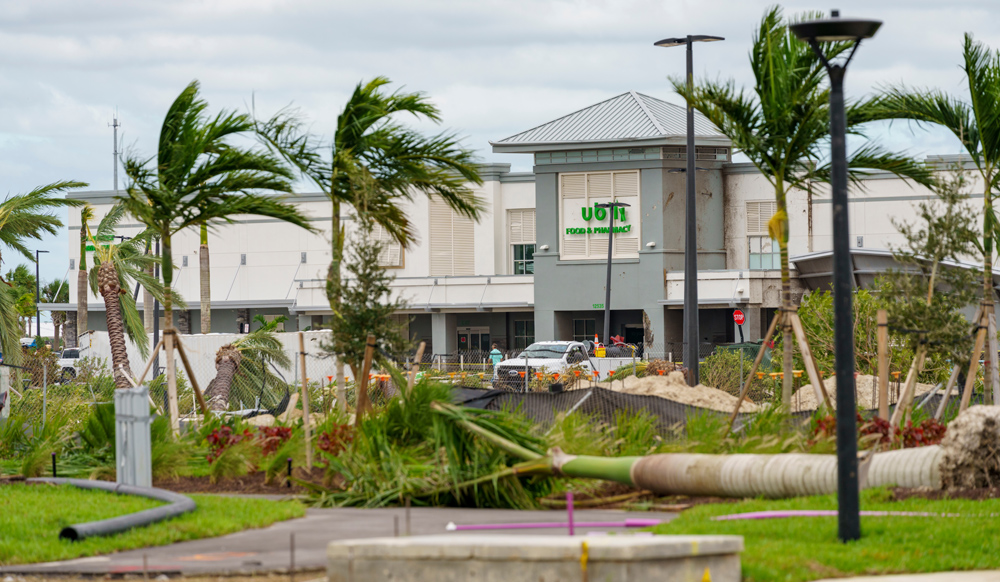What to Expect from a Category 1 Hurricane in Florida: Protecting Your Home and Family

Florida residents know the drill when hurricane season approaches. While a Category 1 hurricane may not sound as intimidating as its stronger counterparts, it’s crucial to understand the potential damage it can cause and how to prepare effectively. Even a lower-category storm can bring strong winds, heavy rain, and unexpected challenges.
What Is a Category 1 Hurricane?
According to the Saffir-Simpson Hurricane Wind Scale, a Category 1 hurricane has sustained wind speeds ranging from 74 to 95 mph. While these winds are considered “minimal” compared to higher categories, they can still cause significant damage, particularly to homes, trees, and power lines.
For instance:
- Shingles and roof tiles can be ripped off.
- Older windows and doors may shatter under wind pressure.
- Large branches and weak trees may fall, damaging property or blocking roads.
- Prolonged power outages are common in areas impacted by a Category 1 hurricane.
In Florida, where many homes are located near water, flooding from heavy rainfall can also occur, even during a seemingly “minor” storm.
Understanding the Different Categories of Hurricanes
Hurricanes are classified using the Saffir-Simpson Hurricane Wind Scale, which ranks storms based on their sustained wind speeds and the damage they can cause. Here’s a breakdown of each category:
- Category 1 (74-95 mph): Minimal damage. Strong winds may damage roofs, siding, and trees. Power outages are common but typically short-lived.
- Category 2 (96-110 mph): Moderate damage. Well-built homes may sustain roof and siding damage. Trees may be uprooted, and power outages can last several days.
- Category 3 (111-129 mph): Major damage. Significant structural damage to homes, especially to roofs. Many trees will be uprooted, and electricity and water may be unavailable for days to weeks.
- Category 4 (130-156 mph): Catastrophic damage. Most roofs and walls will experience severe damage. Fallen trees and power poles will isolate residential areas, and outages may last weeks or months.
- Category 5 (157+ mph): Complete devastation. High percentages of framed homes will be destroyed, with total roof failure and wall collapse. Areas may be uninhabitable for months.
Even though a Category 1 hurricane is the least severe, it’s important to prepare, as storms can intensify quickly and bring unexpected risks.
The Importance of Hurricane-Resistant Windows and Doors
One of the most effective ways to safeguard your home during a Category 1 hurricane is by investing in hurricane-resistant windows and doors. Standard windows may crack or shatter under pressure, leaving your home vulnerable to wind and water damage.
Impact-resistant windows, like those available at Presto Windows & Doors, are specifically designed to withstand hurricane-force winds and flying debris. These windows not only provide peace of mind but can also reduce energy costs and improve your home’s security year-round.
How a Category 1 Hurricane Affects Florida Homes
Florida’s geography makes it especially susceptible to hurricanes of all categories. A Category 1 hurricane can wreak havoc in the following ways:
- Coastal Areas: Homes near the coastline often face storm surges, even with a Category 1 storm. Saltwater flooding can damage structures and landscaping.
- Inland Areas: Don’t let the term “minimal hurricane” fool you—winds and rainfall can cause flash flooding and structural damage far from the coast.
- Mobile Homes and Older Properties: Florida is home to many mobile and older properties that may not meet modern building codes. These homes are at a higher risk of damage.
Preparing for a Category 1 Hurricane
Even if you’ve experienced hurricanes before, it’s important to stay prepared:
- Secure Your Property: Check for loose items like patio furniture or garden tools that could become dangerous projectiles.
- Inspect Windows and Doors: Make sure your home is equipped with hurricane-rated windows and doors. If not, consider upgrading before the next storm.
- Stock Up on Supplies: Ensure you have essentials like water, non-perishable food, batteries, and a first-aid kit.
- Have a Plan: Know your evacuation zone and route. Category 1 hurricanes can escalate quickly, and it’s better to be safe than sorry.
Don’t Underestimate a Category 1 Hurricane
While a Category 1 hurricane might not grab national headlines, it’s a serious storm that demands respect and preparation. For Florida homeowners, the key to minimizing damage is having a home that’s built to withstand these storms. This includes investing in impact-resistant windows and doors, which can mean the difference between a minor inconvenience and a costly repair.
For more information on how to protect your home with hurricane-resistant windows and doors, visit Presto Windows & Doors. Stay safe this hurricane season, and remember—preparedness is the best defense against any storm.
Additional Resources:
- Learn more about hurricane categories at the National Hurricane Center.
- Check out Florida’s emergency preparedness guide for more tips.
By taking action now, you can ensure your home and family are ready for whatever hurricane season brings. Don’t wait—get your home hurricane-ready today!
